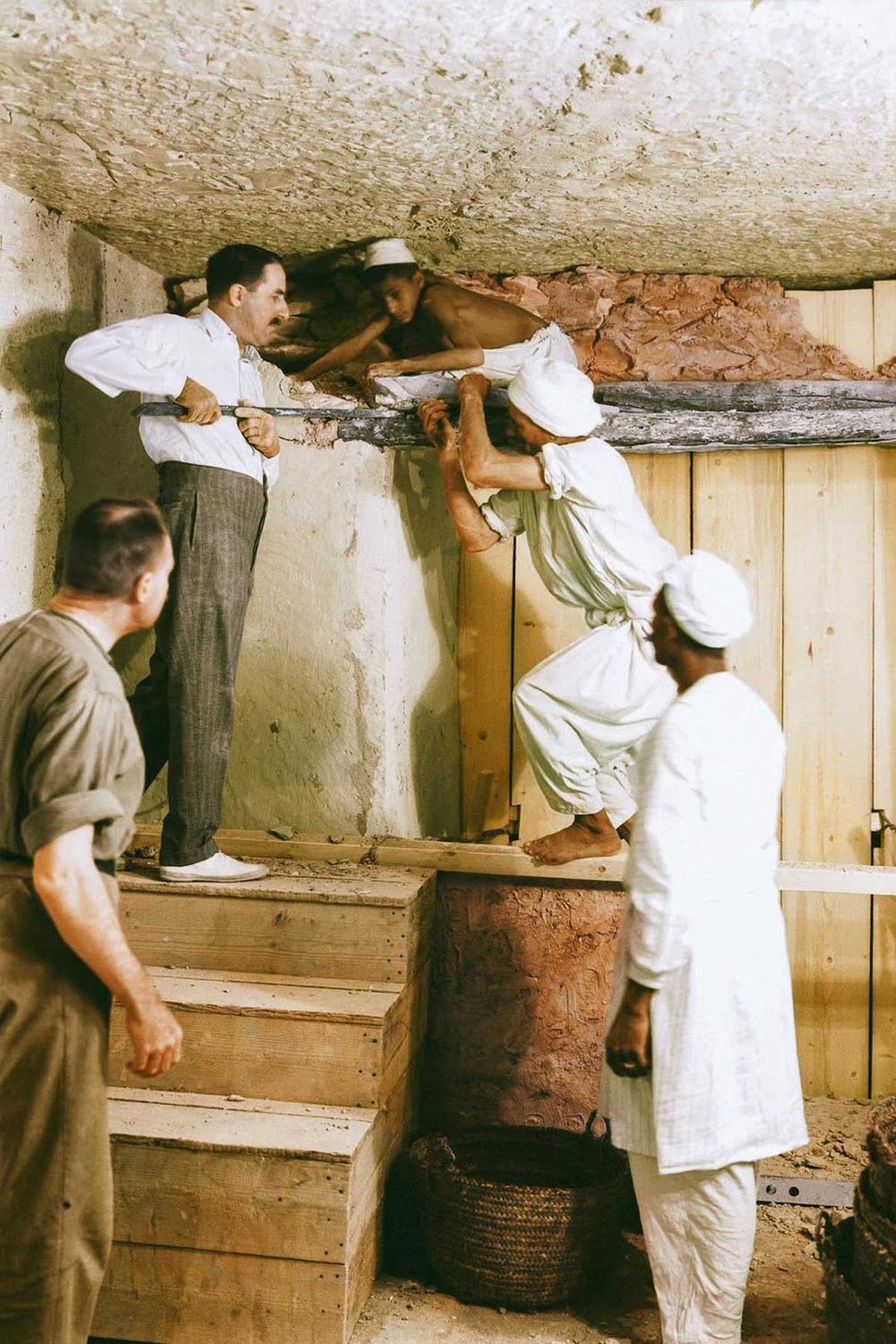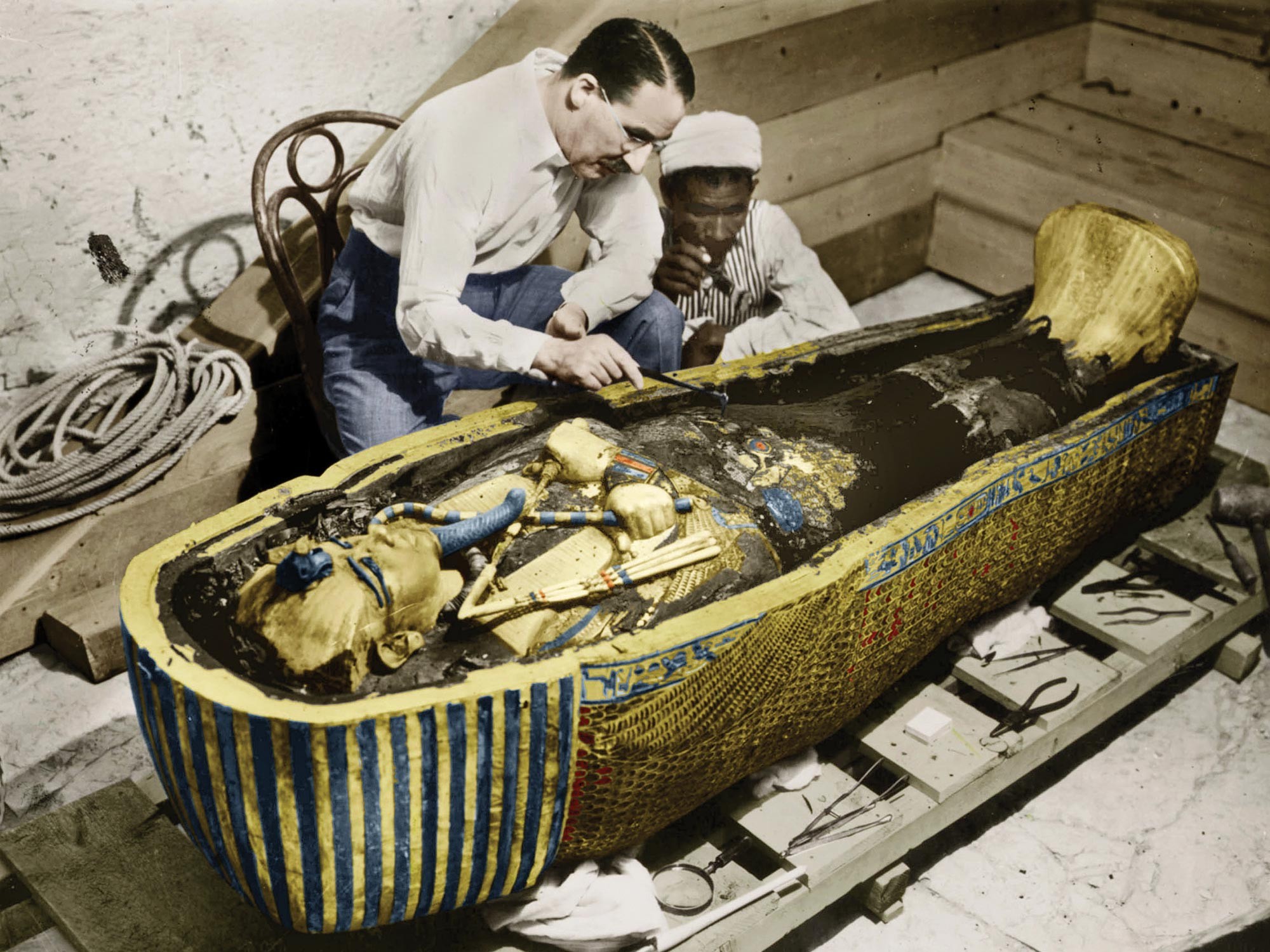
Howard Carter: should we be celebrating now?
The discovery of Tutankhamen’s tomb in 1922 ranks as one of the most astonishing discoveries of all time, but there’s a very real chance that we should already be celebrating Howard Carter’s amazing find...
In two years’ time we’ll be awash in ‘Cartermania’ as we celebrate the centenary of Howard Carter’s discovery of the tomb of Tutankhamen in November 1922 - an incredible journey that started in Swaffham and ended in spectacular fashion in Egypt’s Valley of the Kings. However, it’s more than possible (in fact it’s extremely likely) that the real centenary of Carter’s discovery should actually take place this month - two years before it’s supposed to.
Although his official biography at britannica.com gives Swaffham as his birthplace, Howard Carter was born in Kensington in 1874, the 11th and youngest child of the artist and illustrator Samuel Carter. Young Howard spent much of his childhood in Swaffham (both his parents had been born in the town) and his father was a frequent visitor to the Amherst family at nearby Didlington Hall, painting animals (dead or alive) on the estate.
Samuel passed his artistic skills on to his equally-gifted son, but the teenager was less interested in game shooting than in the Amherst’s extraordinary collection of Egyptian statues and antiquities. In fact, Lady Amherst was so impressed with the boy’s drawings that she arranged for young Howard to join an exploration in Egypt, where - despite the fact he was only 17 at the time - he introduced several innovations to the conventional methods of copying tomb decorations.
The following year saw Carter working for Flinders Petrie (often described as the father of Egyptology) at a remote and desolate site called Armana, which had once been the capital city founded by the controversial pharaoh Akhenaten - whose only known son was a virtually unknown king called Tutankhamen.
As Carter’s career progressed, so did our understanding of who Tutankhamen was. By the end of 1907 a series of momentous discoveries in the Valley of the Kings (which included the tomb of his great grandparents) revealed that Tutankhamen had ruled for at least eight years and was almost certainly mummified and buried in the valley - which meant that his tomb was probably still waiting to be discovered.
Carter had a brilliant, incisive and analytic mind, and through a very careful examination of maps and the locations of known tombs (and when they’d been built) Carter calculated that if Tutankhamen’s tomb did exist it would have been built very close to the entrance to the much-visited and long-open tomb of Rameses VI, which had been constructed around 200 years after Tutankhamen’s death.
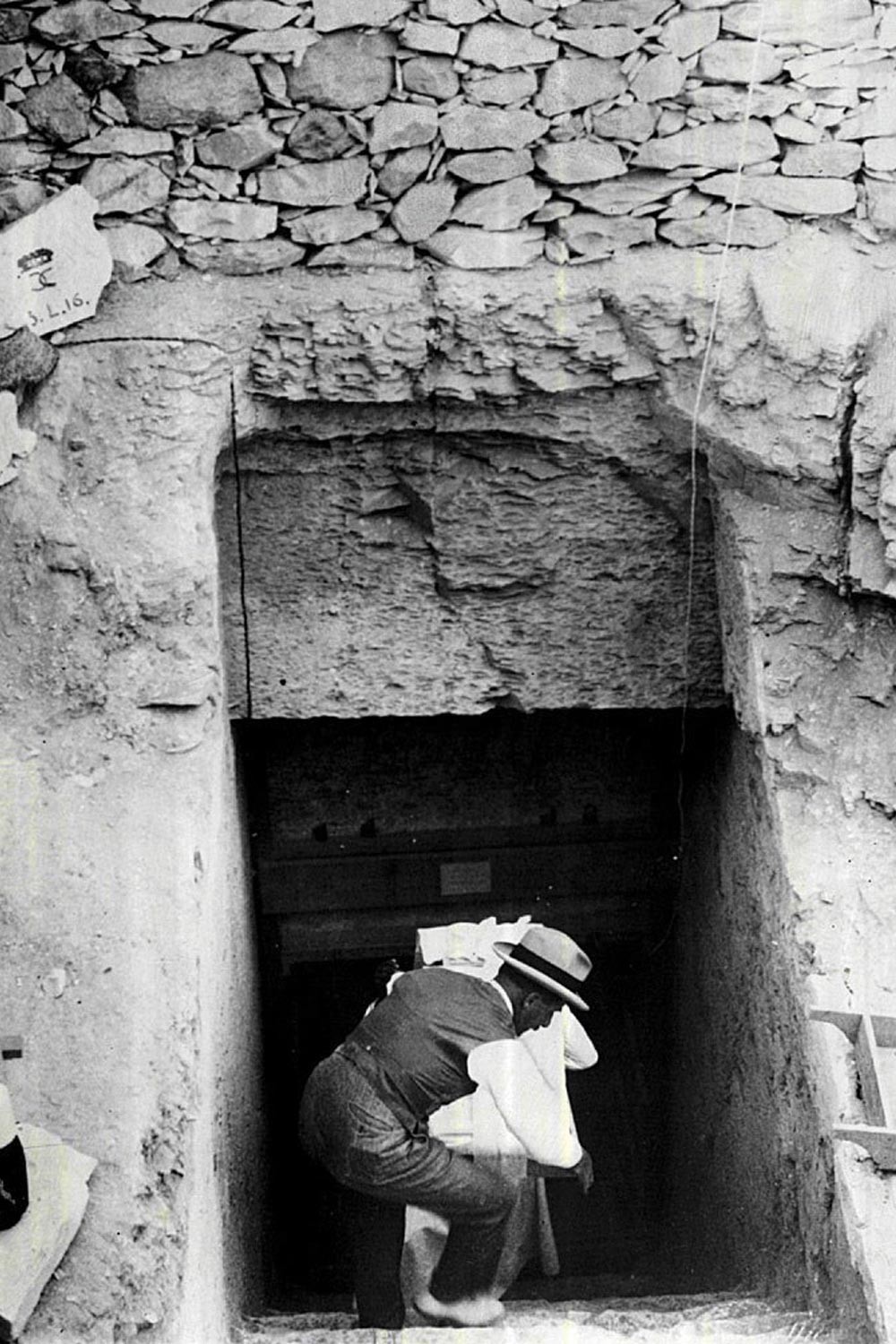
Howard Carter started digging in the area and towards the end of 1920 discovered the remains of the huts used by the workmen building the later tomb. This was an extremely significant find, because it meant that anything under the huts had been there for at least 3,000 years, and if he dug any deeper (thus moving further back in time) he would soon arrive at the ‘time’ of Tutankhamen’s death.
It was exactly what he’d been looking for, and he undoubtedly felt a keen sense of excitement that he was now literally in undiscovered territory. Virtually his entire life and career had led Carter to this very spot, and his precise calculations and deductions appeared to be totally correct. If Tutankhamen’s tomb existed at all, it was beneath his feet.
So, did Carter take a couple of deep breaths, give himself a pat on the back and pick up a spade?
Well, no. Far from it, in fact - he covered up the remains of the huts and moved on to do some much less interesting work elsewhere in the Valley of the Kings. It seems an extraordinary, mystifying and totally inexplicable thing to have done, especially as he spent the remainder of 1920 building a largely superfluous 12-ft high retaining wall outside the entrance to the tomb of Rameses VI.
But this wall with its oddly-placed right angles may well be the smoking gun of the whole affair, because in 24 months’ time it would perfectly frame and protect the entrance to the tomb of Tutankhamen - which no one had seen for 3,000 years and many professionals thought didn’t exist.
The wall is so exactly positioned it’s hard to escape the conclusion that Carter had continued digging under the workers’ huts in November 1920 and had uncovered at least a few of the steps leading downwards to the sealed doorway of a tomb. But why on earth would he then cover it up and temporarily abandon the site?
The answer may well lie in the state of his relationship with Lord Carnarvon at the time. The latter had financed Crater’s work for years and was becoming dissillusioned with having poured considerable amounts of money into excavations that produced little more than fragments of pots and the odd piece of wood.
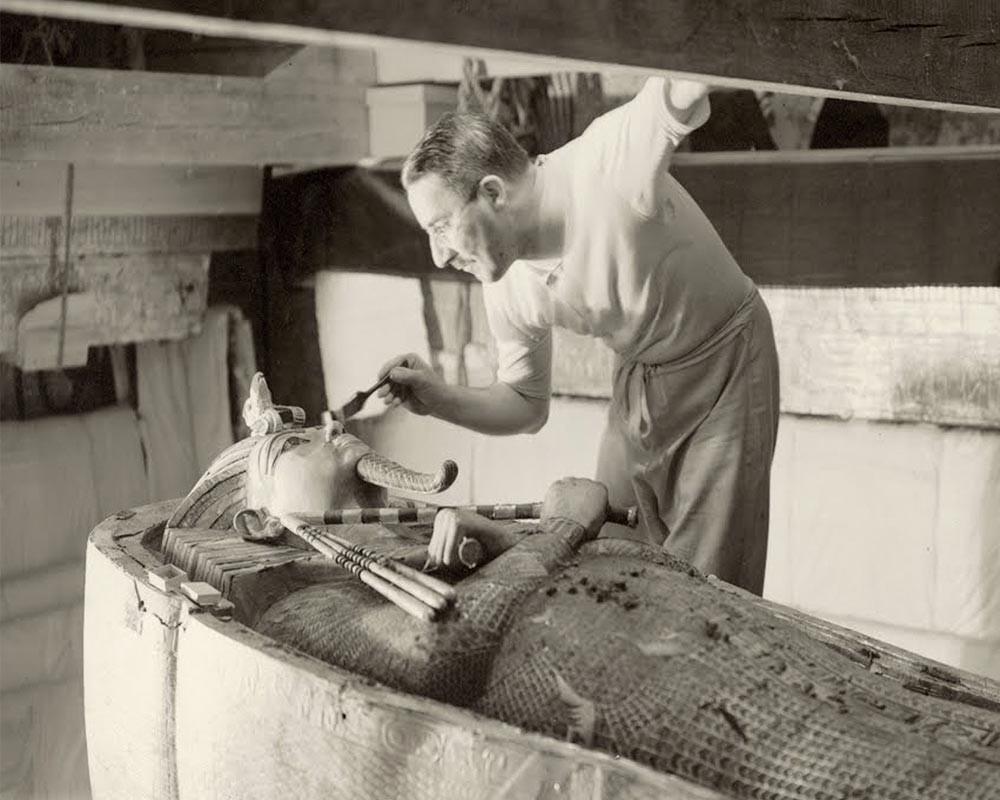
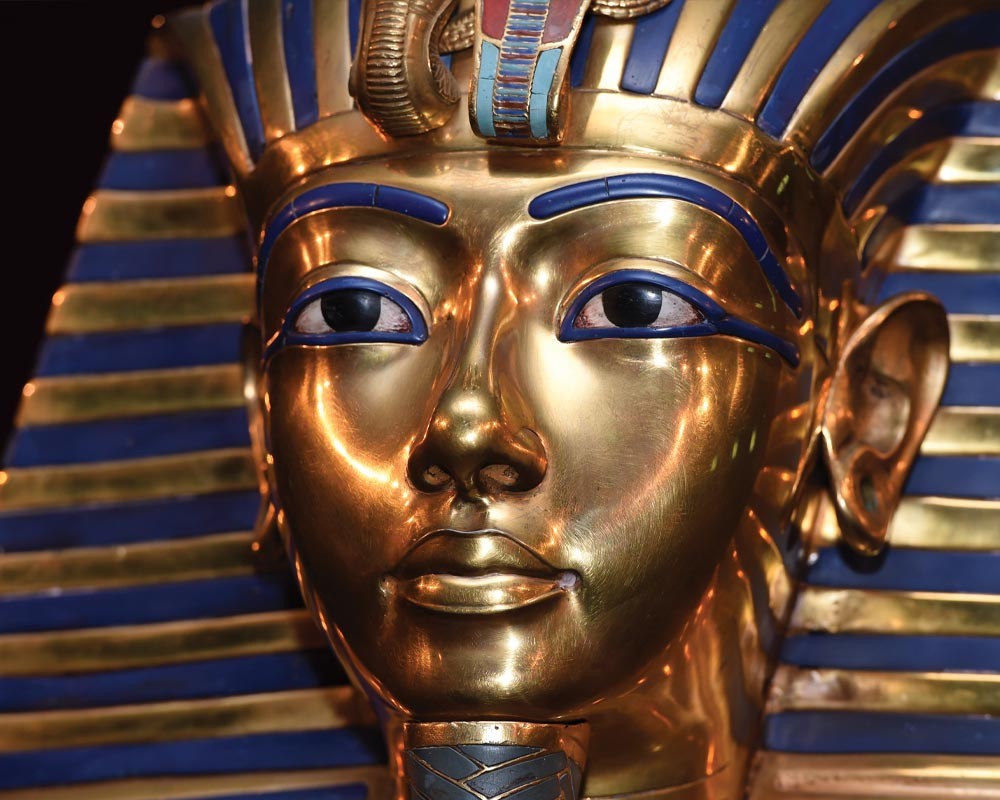
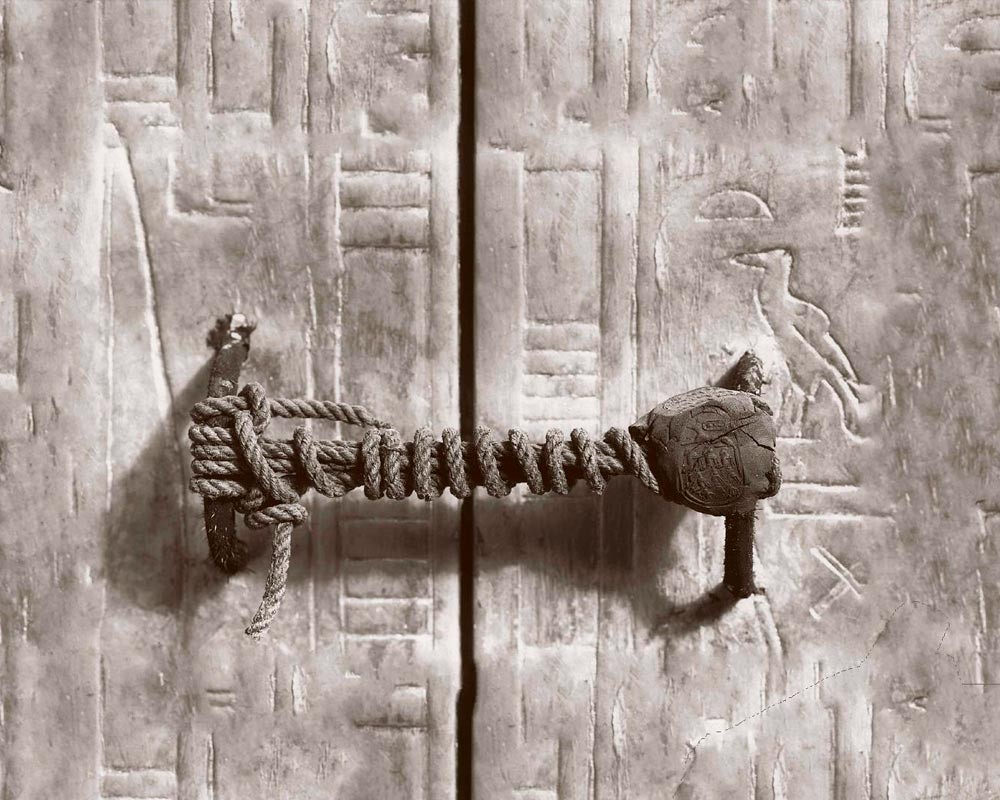
Along with the rest of the family, the aristocrat was also becoming concerned about the friendship between his 20-year-old daughter (then one of the country’s most famous debutantes) and the 48-year-old archaeologist from Swaffham.
The writing was on the wall, and Carter certainly wasn’t stupid - he would have known that (much like the ailing Carnarvon) the money wasn’t going to last forever. He was certainly astute enough to have kept something up his sleeve for when the inevitable happened.
Which it duly did in October 1922, when Carter was summoned to the Carnavon family home at Highclere Castle (instantly familiar as the real Downton Abbey) and was told that the funding was being withdrawn. Lord Carnavon had simply had enough.
Carter’s reaction is revealing. Instead of accepting the perfectly understandable decision (and confirming the general view that the Valley of the Kings had given up all its secrets) he asked, pleaded, implored and virtually begged Carnavon for just one more season’s work. He was convinced it was worth it. He was sure they’d find something worthwhile. Carter even said he’d pay for the work himself as long as he was reimbursed if he did find anything.
Carnarvon eventually agreed, and a couple of weeks later Carter returned to Egypt - immediately (and rather oddly) setting to work on the very spot under the workers’ huts he’d abandoned back in 1920.
For many years a number of archeologists (inclduing Carter himself) had been painstakingly searching in vain for the slightest clues to the tomb of Tutankhamen, but on November 3rd Howard Carter suddenly found it - after only two days of digging and with the entrance conveniently and rather suspiciously protected by the wall he’d built two years earlier.
Despite what you may have gathered from characters such as Indiana Jones and Lara Croft, archaeology simply doesn’t work like that - it takes years of detailed research, meticulous study, careful analysis and excruciatingly slow progress.
Howard Carter himself is a case in point. Tutankhamen’s tomb was found to be extremely small (a mere four rooms) but Carter’s professional approach and commitment to precision and accuracy meant it would take him the best part of 10 years to remove the tomb’s 5,000 separate items - every single one being carefully recorded, photographed, assessed and catalogued before its removal.
And soon after the last object was removed and the tomb swept clear for tourists Howard Carter left Egypt and never returned.
It was almost certainly the greatest discovery in the history of archaeology and its centenary deserves to be celebrated - whenever that is!
At Swaffham Museum the Carter Connection gallery is one of its most popular attractions (it may well be the only museum in the country that does the story justice) and staff have been working on plans to celebrate the centenary for the best part of two years.
“We’re planning to refurbish the Carter Connection, create a permanent reminder in the town centre and hold a series of special events, talks and films,” says Sue Gattuso, volunteer manager at Swaffham Museum. “Our plans had to be put on hold due to coronavirus, but they’re now really taking shape.”
For Sue, the story of Howard Carter is just as exciting as all the gold and treasures.
“His story is one of determination, hard work, talent, support and a fair amount of luck,” she says. “They combined to turn an ill-educated, ordinary, sleepy young man of yeoman stock from Swaffham into one of the most famous archaeologists of all time. And that’s lesson for us all, really.”
To keep up to date with the museum’s plans for the latest information on opening times, please visit the website at www.swaffhammuseum.co.uk
